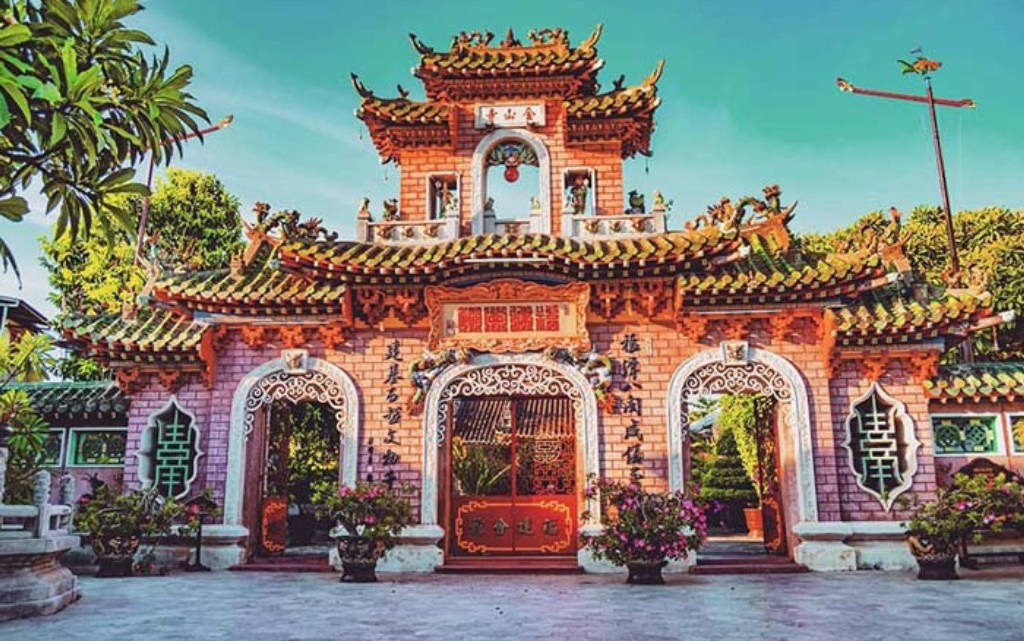Nestled in the quaint town of Hoi An, Quang Nam, lies a testament to Vietnam’s unique historical and cultural evolution. This town witnessed two major cultural exchanges: the first over five centuries ago as Đại Việt expanded southward, and the second around two centuries ago when Western traders arrived with ambitions to spread influence. These events led to profound cultural interactions, with Vietnamese culture adapting and flourishing.
Nestled in the quaint town of Hoi An, Quang Nam, lies a testament to Vietnam’s unique historical and cultural evolution. This town witnessed two major cultural exchanges: the first over five centuries ago as Đại Việt expanded southward, and the second around two centuries ago when Western traders arrived with ambitions to spread influence. These events led to profound cultural interactions, with Vietnamese culture adapting and flourishing.
Hoi An, a well-preserved 15th- and 16th-century Southeast Asian trading port, is the only ancient town in Vietnam that retains its traditional architecture—homes from 200 to 300 years ago alongside temples, shrines, and assembly halls. This architectural legacy earned Hoi An UNESCO World Heritage status in December 1999, making it a living museum of Vietnamese, Chinese, and Japanese heritage.
Discovering Fujian Assembly Hall
Today, we invite you to explore the iconic Fujian Assembly Hall, a traditional Chinese architectural gem located on Tran Phu Street. This hall dates back to 1697 and was originally built by immigrants from Fujian, China. When the Ming Dynasty fell to the Qing in 1649, many Ming loyalists sought refuge in Southeast Asia, including Hoi An, where they established a close-knit community known as Minh Huong.
The hall was initially constructed of wood, but in 1757, it was rebuilt with bricks and tiles, adopting a unique layout known as “Nội công ngoại quốc.” Its intricate architectural details showcase classic Chinese style with symbolic decorations, such as engraved dragons symbolizing power and prosperity.
Inside, you’ll find the hall dedicated to the Goddess of the Sea, Thien Hau Holy Mother, along with deities of wealth, children, and ancestors. The Fujian Assembly Hall became a space for the Fujian community to connect, worship, and support one another. Over time, the contributions of the Fujian Chinese diaspora have helped preserve the beauty and grandeur of this sacred site.
Highlights of the Fujian Assembly Hall
As we enter through the grand three-door gate, a significant feature of traditional temples, admire its intricate ceramic inlays and curved roof tiles. The roofing style, called “yin-yang tiles,” uses both rounded and flat tiles to create a dynamic pattern that helps manage rainwater runoff while maintaining an elegant design. Each dragon statue on the roof evokes blessings, with twin dragons framing the symbol of the elixir of life.
Passing through the gate, we come across the central courtyard’s “Nam Bo” rock garden, featuring a carved motif of a carp transforming into a dragon—a symbol of perseverance and success. This motif celebrates the legend of the carp, which braved three fierce waves to ascend to the heavenly Dragon Gate, becoming a powerful dragon.
The assembly hall’s interior showcases symbolic statues of the “Four Sacred Animals”—the dragon, kylin, turtle, and phoenix. These revered creatures represent strength, kindness, endurance, and high virtue in Eastern mythology. Two stone kylin statues guard the hall, believed to bring good fortune and watch over the sanctuary.
Finally, within the main hall, intricate incense coils hang from above—a custom for worshippers to pray for health, prosperity, and good fortune. The Fujian Assembly Hall continues to be an important cultural site, welcoming visitors to experience the deep-rooted heritage of Hoi An and its diverse community.
 Register
RegisterSign in Travel Agent
Sign in Supplier
Sign in Affiliate
Sign in Guru



 Hội Quán Phước Kiến, Trần Phú, Old Town, Minh An, Hội An, Quảng Nam, Vietnam
Hội Quán Phước Kiến, Trần Phú, Old Town, Minh An, Hội An, Quảng Nam, Vietnam